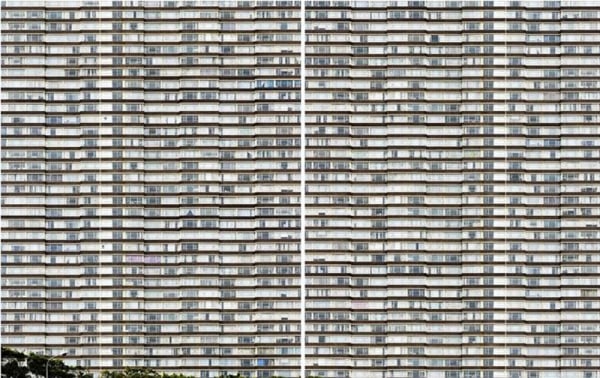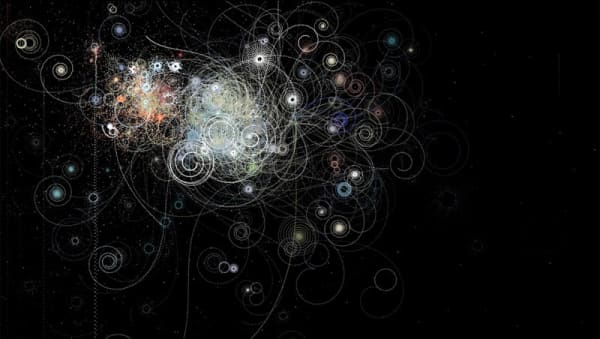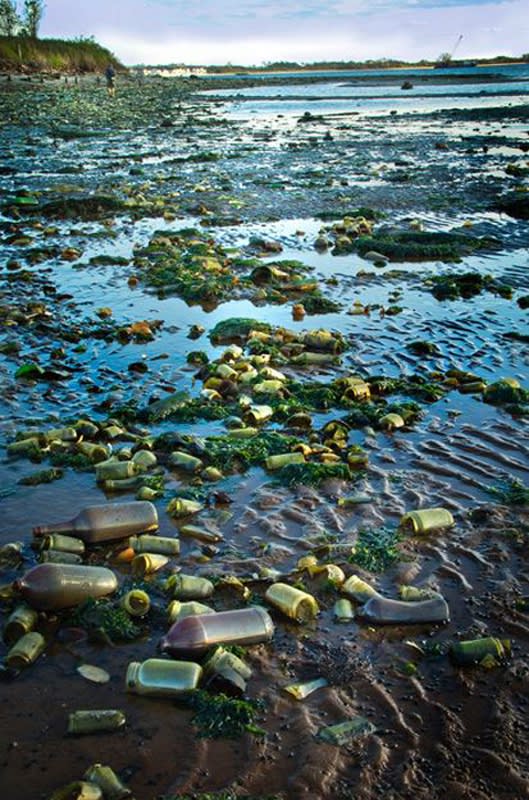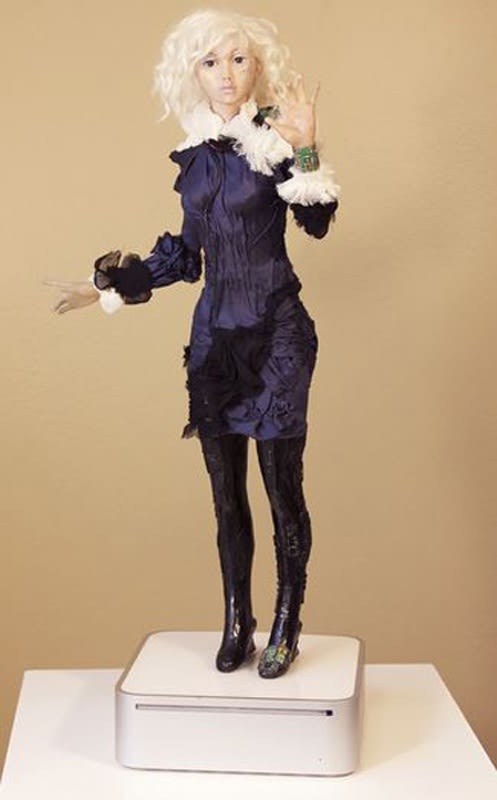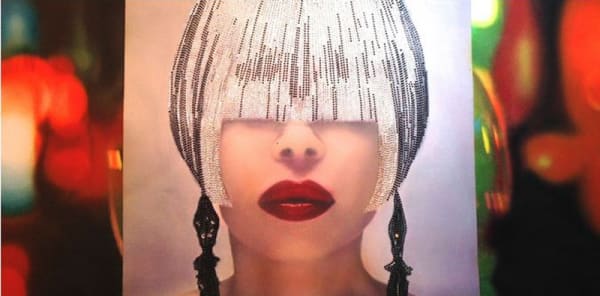NYC25
-
 Kazue taguchi, illum / steam, 2011/13
Kazue taguchi, illum / steam, 2011/13 -
 Ian Trask, Holon, 2012-13
Ian Trask, Holon, 2012-13 -
 Chloe bass, disruption village, 2013
Chloe bass, disruption village, 2013 -
 vincent beziudenhout, apartment diptych, 2013
vincent beziudenhout, apartment diptych, 2013
-
 barron clairborne, 01-09-1923 @ 8:10 post meridian, 2013
barron clairborne, 01-09-1923 @ 8:10 post meridian, 2013 -
 graciela cassel, accelerate, 2013
graciela cassel, accelerate, 2013 -
 c.o.a., bioplurb, 2013
c.o.a., bioplurb, 2013 -
 elisa decker, inside out, 2012-13
elisa decker, inside out, 2012-13
-
 paul deo, changing of the guard, 2013
paul deo, changing of the guard, 2013 -
 nicky enright, sense us 2038, 2013
nicky enright, sense us 2038, 2013 -
 garry grant, storm warning 2038, daria 2.0, 2013
garry grant, storm warning 2038, daria 2.0, 2013 -
 mikhail gubin, new york 2038, bird's eye panorama, 2013
mikhail gubin, new york 2038, bird's eye panorama, 2013
-
 carter hodgkin, irises on a rock, 2013
carter hodgkin, irises on a rock, 2013 -
 tj hospodar, font dance, 2012-13
tj hospodar, font dance, 2012-13 -
 chanel kennebrew, the nyc future project, 2013
chanel kennebrew, the nyc future project, 2013 -
 marcia lloyd, detritus, 2013
marcia lloyd, detritus, 2013
-
 robin michals, castles made of sand: coney island, high tide, 2013
robin michals, castles made of sand: coney island, high tide, 2013 -
 lori nelson, hello, brooklyn, 2013
lori nelson, hello, brooklyn, 2013 -
 lauri panopoulos, sonet, 2013
lauri panopoulos, sonet, 2013 -
 guillaume paturel, ny, 2013
guillaume paturel, ny, 2013
WESTWOOD GALLERY NYC, in collaboration with Full Spectrum Experience, Brian Tate, Danny Simmons, and New York City Economic Development Corporation, presented an exhibition of 25 artists who envisioned NYC 25 years in the future, entitled NYC25. The New York visual artists from all five boroughs presented both utopian and dystopian views related to environment, society, architecture and robotic influences. Hundreds of artists submitted entries, and a panel of judges selected the leading twenty-five artworks. The jury panel included Anne Pasternak (former President and Artistic Director of Creative Time, currently Director of the Brooklyn Museum), and Susana Torruella Leval (Director Emerita, El Museo del Barrio), along with other esteemed jurors, shown in the full list below.
James Cavello curated the NYC25 exhibition in the gallery to present an experience for the viewer. The artwork varied in media, such as Holon, a towering column made from hundreds of rolled, recycled cardboard by Ian Trask, placed next to Illumination/Stream, a reflective installation of mylar and light by Kazue Taguchi. Artist Carter Hodgkin (Irises on a Rock) composed original abstract video compilations with mesmerizing content. C.O.A., a group of artistic architects created a surreal art-computerized digital print with a scene of anthropomorphic large-scale plants living in the Gowanus Canal as natural bio-filters (Bioplurb).
The artist selected by the judges for the first prize with monetary award was Chanel Kennebrew, for her work entitled The NYC Future Project. Chanel created a series of photographic portraits of individuals in NYC each holding a handwritten sign with only one word of their choice to predict or contemplate the future. For her project, Chanel visited several crossroad locations in the city and set up a portable studio for passersby to participate. The final wall installation of black and white photographs was a compelling commentary on the momentary thoughts of individuals about the future.
NYC25 PANEL OF JUDGES
Vin Cipolla, President, The Municipal Art Society of New York
Beth Rudin DeWoody, Philanthropist, Curator, and Arts Patron
Ruby Lerner, Executive Director and President, Creative Capital
Louise Mirrer, Ph.D., President and CEO, The New-York Historical Society
Anne Pasternak, President and Artistic Director, Creative Time
Jan Seidler Ramirez, Chief Curator & Director of Collections, National September 11 Memorial Museum
Michael Rogers, Author, MSNBC Columnist, and Futurist
Mickalene Thomas, Visual Artist
Susana Torruella Leval, Director Emerita, El Museo del Barrio
Santigold, Musician
ARTISTS
Chloe Bass, printed material, Traffic Disruption Village
Vincent Bezuidenhotu, photograph dyptich, Apartment
Graciela Cassel, video, Accelerate
Barron Claiborne, photograph, 01:09:1923 @ 8:10 Post Meridian
C.O.A. Babak Bryan, Henry Grosman, Newton Kershner, Jake LaChapelle, digital art print, BioPlurb
Elisa Decker, photograph, Inside Out
Paul Deo, mixed media painting, Changing of the Guard
Nicky Enright, c-print, Sense US 2038
Garry Grant, digital collage, Storm Warning 2038 Daria 2.0
Mikhail Gubin, mixed media, New York 2038. Bird's Eye Panorama'
Carter Hodgkin, video, Irises on A Rock
TJ Hospodar, animated gifs, Font Dance
Chanel Kennebrew, photographs, The NYC Future Project **Received CurateNYC award**
Marcia Lloyd, photograph, Detritus
Robin Michals, photograph, Coney Island High Tide
Lori Nelson, oil on wood, Hello Brooklyn
Lauri Panapoulos, mixed media sculpture, Sonet
Guillaume Paturel, acrylic and collage on wood, NY
Greg Petan, mixed media, Femme 2038
Dominique Sindayiganza, photograph, Wisdom
Kazue Taguchi, site specific installation, Illum / Stream
Atanaska Tassart, acrylic on canvas, Tolerance
Ian Trask, mixed media sculpture, Holon
Andrew Weigand, architectural rendering, Technocarpet
Agnieszka Zabawa, mixed media, Street Crowd
A project of Full Spectrum Experience, produced in partnership with the New York City Economic Development Corporation, with support from Con Edison. Promotional partner MTA New York City Transit. Official Media Sponsors: The L Magazine, WNYC
ARTISTS' STATEMENTS
Chloe Bass
"Traffic Disruption Village" asks us to consider what we would need to survive under the conditions of a mass stalled auto disaster. In 2010, China experienced a 9 day, 100 km long traffic jam that turned the road into "a collection of rooms," a temporary village born of disaster. Traffic Disruption Village served as a drill for New Yorkers to prepare for a similar potential disaster phenomenon before it occurs. In the event of a sustained jam, drivers and passengers will need to work together to create a vivid and user-friendly web of resources for living in gridlock.
Vincent Bezuidenhout
With half the world's population now living in cities, Bezuidenhout's work questions the role of the city as a social construct. This comes at a time when the complexity and multi-dimensionality of the city have seemingly developed outside of our control and intentions. There is a marked shift towards a new urbanism which will define the next manifestation of the city.
Graciela Cassel
"Accelerate" shows the urban landscape while traveling but it is also a meditation about modern cities. In "Accelerate", light and speed stream together. Light is the only thing that can achieve the highest speed. Light appears with contrasts and reflections and speed with its variations when increasing and decreasing the acceleration. Along this trip, our lives appear as real but also as a mirage. Original music by Gordon Beeferman.
Barron Claiborne
The artist wanted to invoke how the past, present and future are episodes in the cycle of existence. The moment in which they occur takes place only in the present. The view in this photograph may be the same as it was 80 years ago or 50 years into the future. Ultimately, time may simply be an illusion created by our senses and ourselves and coming from the great unknown.
C.O.A.
By the late 2030's the plants introduced into the Gowanus Canal to clean the water had evolved and colonized the machines. The hybrid plant/machines roamed the canal looking for new pollution to eat. Scientists named this hybrid system bioPLURB.
This was the response of C.O.A. to the 2011 Gowanus Lowline Ideas Competition, which asked participants to rethink the future of the Gowanus Canal in Brooklyn, NY and its surrounding neighborhood.
Elisa Decker
Twenty-five years from now, the photographer wishes she would be still be shooting from her perch overlooking the Hudson River. But who knows what it will look like then. Perhaps things will be turned inside out like during Sandy. With every photo shoot, it becomes clearer that the only constant thing is change.
Paul Deo
There is more unknown than known about our life and our universe. When looking up in to the stars or clouds, the artist feels the pure spirit is there, and equates the outer space's black hole with our subconscious mind. Experts say we only use 10% of our brain. What is in that 90% of our brain? What is beyond light? Infinity. Often, creation stems from lead of the subconscious. Paul Deo connects traditional art with digital technologies, merging art and science just as merging left and right brain.
Nicky Enright
"Race" has been an official question since the first government Census in 1790 despite the dubiousness of the subject according to scientists. By the year 2038 official "races" will be so outdated that citizens will be adding an unruly amount of their own boxes. These subversive practices will lead the government to completely abandon the census race questions by mid-century.
Garry Grant
New York City is re-imagined with a robust economy, cutting edge technology hubs, and new organic architecture now facing yet another natural disaster much bigger than Hurricane Sandy. This re-imagine photo was taken on the eve of the super-storm; its strength beyond category scale is fast approaching NYC. With high wind speeds before the storm, most of the population has evacuated the city for safe shelter. Others who can't afford to leave or refuse to leave will find ways to seek shelter to stay safe. The wealthy will be able to live comfortably in new luxury condos in the skies with prices beyond reach of the average. This is one last look at the city that never sleeps, but will be awakened as Atlantis.
Mikhail Gubin
The artist wants to reconstitute in the flow of transient images of the past which stimulate imagination to generate a map of the future. It is not an attempt to carry the past over onto paper in the concrete form but rather, a depiction through the form of multiple associations. The sum of these associations creates a new reality which in its turn extends its frontiers towards the future. It is a process similar to the action of our memory – from fragments we are trying to reconstruct the past or establish how the future will be like.
Carter Hodgkin
The work explores a new language of abstraction based on the physics of colliding atomic particles. Amid an infinite void, thousands of dots explode and implode in a constant state of flux. Life in New York City is one of dynamic tension; order vs. randomness, mirroring the instability of colliding atomic particles. Hyper-energy is the result and will increase exponentially in the future.
TJ Hospodar
When normally reviewing an image file, it is never visually apparent that the file itself had firstly been constructed to be understood by the machine itself. This assembly language code is the concealed, cryptic structure that is known to hold the image together and which may be the language of the future. By digging deep into the file, beyond what image processing software presents to us and beyond the average scope of human understanding, we can illuminate the essence of the image as the machine knows it.
Chanel Kennebrew
NYC is a place of history and experimentation, which often defines and inspires society. It's the home to major institutions in culture finance, media and diplomacy. This city lures travelers from all over the universe. The movement of this place is electric and brings out the best and worst in people. This is a place where unimaginable things take place. Will that always be the case? In 25 years from now, what impact will this city have on the world? The artist decided to open up the dialogue and ask people in one word how they envision the future. She built a portable photo booth installed in various locations around NYC, and asked people to write down one word they feel embodies NYC 25 years into the future, while inviting them to have their portrait taken in the booth.
Marcia Lloyd
Marine debris is an escalating problem, one that can inundate our beaches by 2025 and have serious effects on the environment, the economy, and our health and safety. Its sources are street trash, beach refuse, and garbage dumped or blown over from ships and boats. Marine debris can endanger ecosystems and wound, strangle, suffocate, or starve sea creatures while also injuring or killing people. The debris in this photo at Dead Horse Bay, Brooklyn, is a result of its usage for the disposal of chopped-up bones by the horse-rendering plants that dotted the bay.
Robin Michals
"Castles Made of Sand" is a long-term project, started in 2010, documenting the built environment most vulnerable to sea level rise in the New York Metropolitan area. Given a five-foot sea level rise predicted for one hundred years in the future, New York City will lose seven percent of its land. Without protection from the rising tides, the buildings in these areas that now seem so solid are as fragile as sand castles. Other images from the same series are currently in an exhibit "Documenting Sandy" at the Brooklyn Historical Society, October 16, 2013 - Spring 2014.
Lori Nelson
The boundaries of Brooklyn areas are rapidly expanding and one-time dicey neighborhoods morph into safe little spawn havens. One of the surest signs that a place is becoming resettled by moneyed newcomers is an increase in the 2-foot-tall-and-under set. What will Brooklyn look like in 2025? Who will be in charge then?
Lauri Panopoulos
Throughout daily life as a New Yorker the artist is both inspired and disturbed by the rapidly growing relationship of human beings to their devices. It is interesting to observe how people take on machine-like characteristics in the speed of their movements, their conversations and the inventiveness of their fashions. "Sonet" is the portrait of a young machine/woman who dwells in a New York City of the future. She is part of an ongoing body of work that questions the idea of designing life, blurring the borders between human potential and the omnipotent. It also stems from the desire to communicate a futuristic vision of New York City as the art and technology mecca of the world.
Guillaume Paturel
Despite its extremely rational original frame, NYC is a continuation of the irrational. Mutations are extremely fast, with an unlimited growth. The artist tried to show this chaos and expansion which Le Corbusier described in the phrase "a beautiful disaster." This paradoxical formula expresses perfectly the architectural capharnaum city made of various styles; anachronisms are rubbing shoulders in a joyful chaos. In 2036, Manhattan will be always the laboratory of a new culture, an island which continues the collective experience of a new mode of metropolitan life where natural and artificial reality ceased to exist. This city is the arena of the terminal stage of Western Civilization: the simultaneous explosion of human density and invasion of new technologies.
Greg Petan
Meet one of the citizens of NYC in 2038. Her helmet is sleek and sophisticated; an assemblage of microchips to enable communication through a hologram of imagery. Through an implant in the brain, she can interact with information immediately as well as supplement her keen eyesight, which now provides a 360º view of her surroundings. The world has changed and citizens have access to political, social, cultural, commercial and abstract information, by honing their brain into the thoughts they would like to receive. The ethnicity of the woman is ambiguous; the U.S. and NYC has become a melding of ethnic backgrounds and views of racism have changed to differences that occur in individuals' intelligence or experiences.
Dominique Sindayiganza
In 2038 children will be our teachers. They will reveal to us the wisdom of Mother Earth and the healing spirit of the sun. We will listen to them and honor them for showing us the way.
Kazue Taguchi
The artist's interest in creating works with light is a result of the need to experience the environment through its visual qualities in order to create a relaxing and sublime space and how its qualities can be incorporated in the city of the future. Of all the cityscapes that dazzle us, the nightscape of New York is a favorite: by day the city churns with activity, but at night the majestic skyscrapers are transformed into a jewelry chest that overwhelms us with sublime elegance. The site-specific work that expresses the artist's New York at night will continue to enthrall us all for decades to come.
Atanaska Tassarts
The universe itself, along with readings in quantum physics, is the source of inspiration. It is always a part of us and the source of all we do. Tassarts' works combine smaller energetic particles with a sense of movement and vibration created by color and abstract composition. As New York harnesses new physical energies - air, wind, sun, and water – we should aim to see the city uplifted with spiritual energies of harmony, love, peace, and universal tolerance. Painting included in a 2013 exhibition traveling in Europe as part of the International Tolerance Project.
Ian Trask
Scoured mostly from the sidewalks of NYC, the cardboard for this project is a testament to our unsustainable cycle of consumption and disposal. What started as a process for minimizing waste in the studio eventually evolved into a body of work concerned with themes of accumulation, randomness, and creative innovation. Beautiful shapes and structures are born from discordant colliding piles of street trash. Inspired by Ken Wilber's writings on creative emergence, evolution, and transcending old conventions, Holon aims to readdress the question: "What is Waste?" If we ever hope to solve the world's waste problem, the answer surely lies in reinventing the materials already in circulation before manufacturing new remedies.
Andrew Weigand
How will New York respond to issues including climate disruption, resource scarcity, a growing population, and inequality? The TechnoCarpet, here proposed at Sunnyside Yards in Queens, is a model for a new urban park that combines public social amenities with the infrastructure necessary to support a growing population. A public work of this scale would be complicated and slow to realize, but more importantly, it would require us to reach beyond our contemporary concerns and think about the future and shape it to meet our yet unknown needs and desires.
Agnieszka Zabawa
"If you want a vision of the future, imagine a boot stamping on a human face – forever." George Orwell, Thinking about NYC in 25 years brings up the vision of George Orwell's "Nineteen Eighty - Four" novel. It may be that the Orwellian conception of the totalitarian world will never happen, but all the tools are in place and information has become a commodity.



